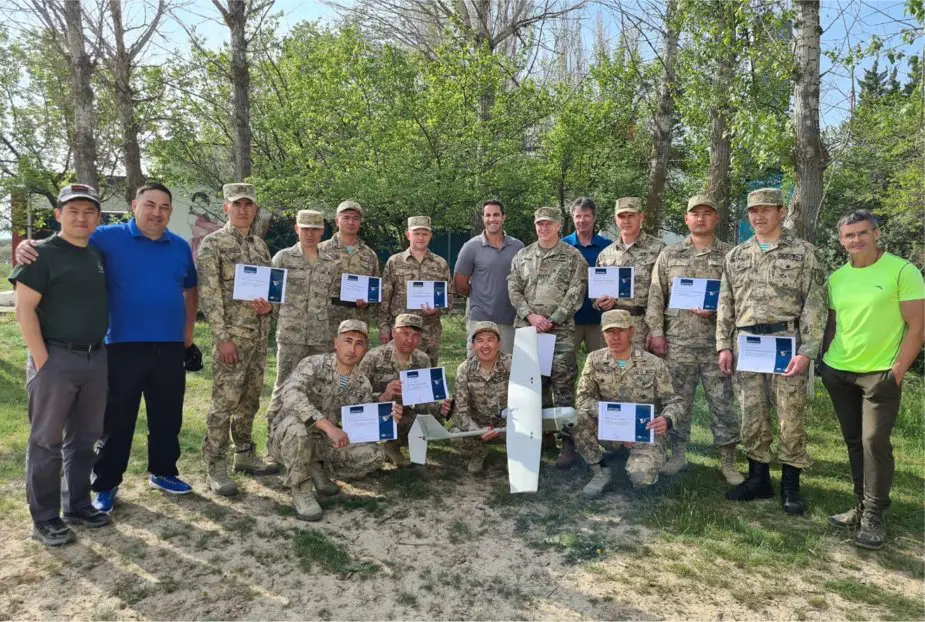According to information published by the U.S. Embassy of Kazakhstan on May 4, 2022, U.S. Security Cooperation Office, in cooperation with Kazakhstan’s Border Guard Service, recently completed AeroVironment's Raven Unmanned Aerial Vehicle (UAV) operator training. These new UAV operators will employ US-provided Ravens unmanned aircraft to help monitor the borders of Kazakhstan.
Follow Air Recognition on Google News at this link
 RQ-11 Raven Unmanned Aerial Vehicle (Picture source: U.S. Embassy of Kazakhstan)
RQ-11 Raven Unmanned Aerial Vehicle (Picture source: U.S. Embassy of Kazakhstan)
The AeroVironment RQ-11 Raven is a small hand-launched remote-controlled unmanned aerial vehicle (or SUAV) developed for the United States military, but now adopted by the military forces of many other countries.
The RQ-11 Raven was originally introduced as the FQM-151 in 1999, but in 2002 developed into its current form, resembling an enlarged FAI class F1C free flight model aircraft in general appearance.
The craft is launched by hand and powered by a pusher configuration electric motor. The plane can fly up to 10 km at altitudes of approximately 150 m above ground level, and over 4,500 m above mean sea level, at flying speeds of 45–100 km/h.
The RQ-11B Raven UA is launched by hand, thrown into the air like a free flight model airplane. The Raven lands itself by auto-piloting to a pre-defined landing point and then performing a 45° slope (1 foot down for every 1 foot forward) controlled "Autoland" descent. The UAS can provide day or night aerial intelligence, surveillance, target acquisition, and reconnaissance.
















